Electromagnetic Induction and Alternating Current
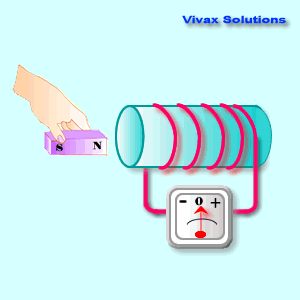
When there is a changing magnetic field around a closed circuit, as shown in the animation, an electric current is induced in the circuit.
This phenomenon is known as Electromagnetic Induction.
The greater the rate of change in magnetic field, the greater the electric current/voltage.
So, in order to increase the magnitude of the current or the voltage, the following can be done:
- Strong magnets can be used
- More magnets can be used
- The number of turns of the solenoid can be increased
- Either the magnet or the coil or both can be moved faster
- A soft iron core can be inserted into the solenoid.
Both the magnitude and the direction of the current/voltage generated this way changes with time.
Therefore, it is called an Alternating Current - AC. The current generated by a battery, on the other hand, is called a Direct Current - dc; neither its direction nor the magnitude changes with time.
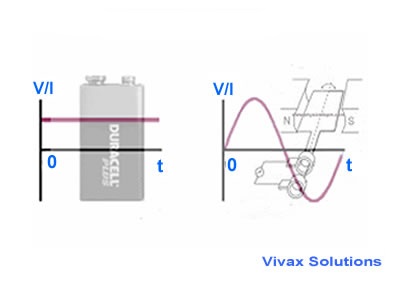
The number of cycles of an AC is called frequency(f). It is measured in Hertz - Hz. In the UK, the frequency of AC is 50Hz.
Period(T) is defined as the reciprocal of frequency - 1/f.
T = 1/f.
E.g.
Calculate the Period of AC in the UK.
T = 1/f = 1/50 = 0.02seconds.
Peak Current and RMS value of an AC
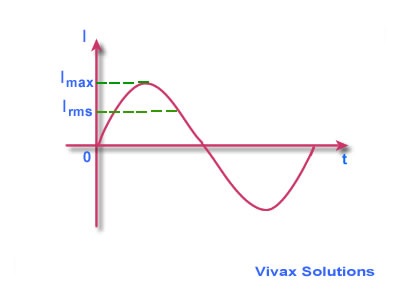
Since the magnitude of an AC changes with time, the power dissipated at a device fluctuates too in proportion to the current.
Therefore, the mean value of the power must be taken into account.
The power when the current is zero = 0
The power when the current is maximum = VImax = I2maxR
So, the mean power = (0 + I2maxR)/2 = (I2maxR)/2
The value of the AC that corresponds with the mean power is called, the Root Mean Square - rms - of the current, Irms.
I2rmsR = (I2maxR)/2
I2rms = I2max
Irms = Imax/√2
This is the effective value of an AC.
E.g.
The peak value of an AC is 6A. Find the rms of the AC, peak voltage and the rms of the voltage, if it goes through a resistance of 5Ω.
Irms = Imax/√2 = 6/√2 = 4.24A
Vmax = Imax x R = 6x5 = 30V.
Vrms = Irms x R = 4.24 X 5 = 21.2V.
The Role of a Diode of a circuit
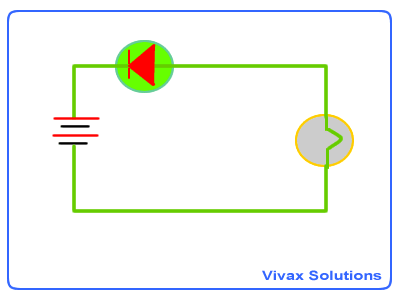
A diode lets a current pass through a circuit only in one direction - forward biased. If it is connected in the opposite way, there will not be any current in the circuit - reverse biased. The above
animation shows how the current is affected by the polarity of a diode.
It is important to connect a resistor with very high resistance in series with a diode in order to protect it from a high current.
When a diode is present in a circuit, it cuts off the negative parts of the
cycle of an AC. So, we get only the positive halves of the cycles. This is
called Half-Wave Rectification.
Full Wave Rectification
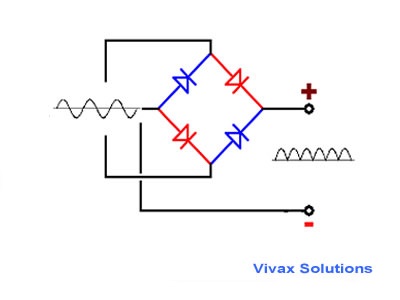
When a set of four diodes is present in a circuit as shown above, it cuts off
the negative parts of the cycle of an AC, while leaving no gaps in the
voltage.current cycles. So, we get only the positive halves of the cycles
without gaps. This is called Full-Wave Rectification.
E.g.
The mobile phone charger has got a circuit for
half-wave rectification in it. The mobile phone battery is a DC source which is
charged by a source of AC. So, the set of diodes makes sure right polarity is
maintained during the charging process.
Superconductivity
When the temperature of certain metals are lowered to very low levels, they lose
their resistivity abruptly. This phenomenon is called superconductivity.
The temperature at which this occurs is called critical temperature
of the particular metal. The critical temperature depends on
the substance. The loss of resistance means there is no energy losses across the
substance, which is very beneficial to us. However, the cost of lowering
temperature still heavily outweighs any potential gains. The highest temperature
at which it occurs at present is -180 0C, which is still too low in
practical terms to achieve any meaningful benefit.
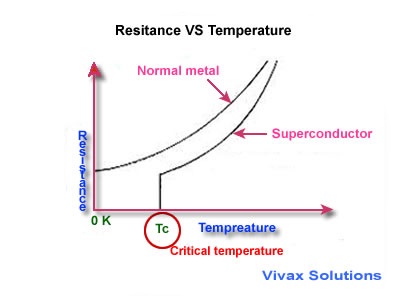
At present, liquid nitrogen can be used to get the low temperature required for
superconductivity. However, we are still a way off using the technology on a
mass scale.
Next
Previous